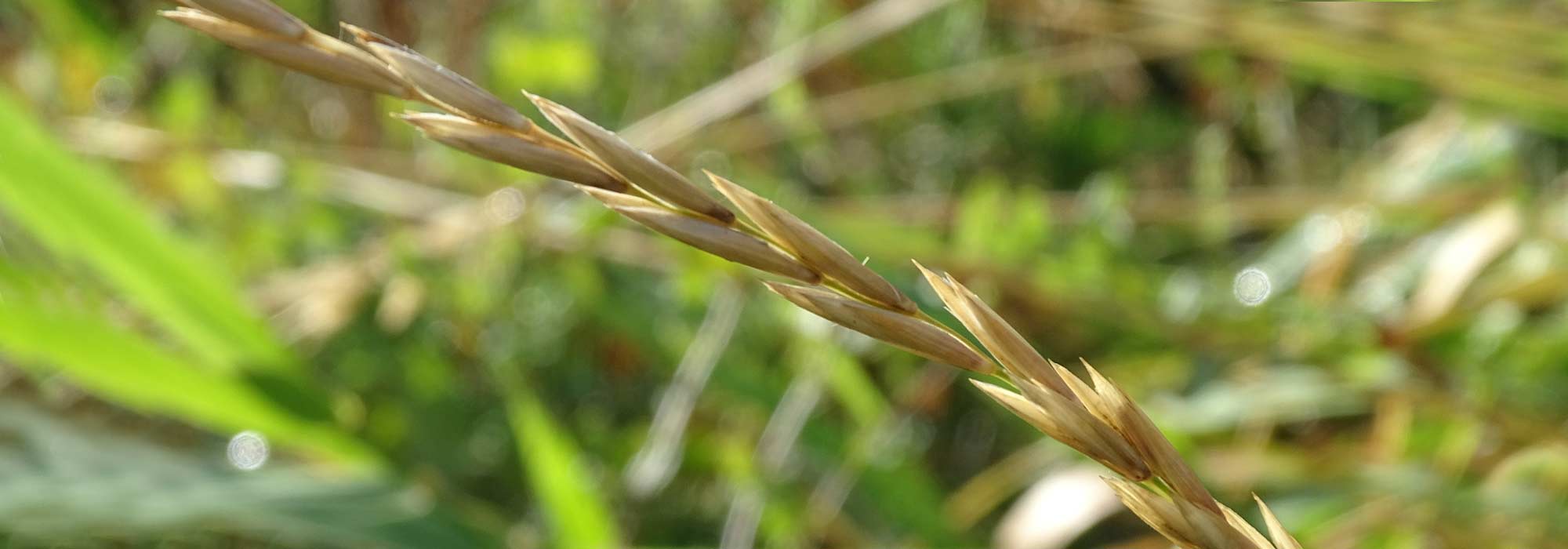
How to get rid of couch grass?
Recognise and remove couch grass
Contents
Couch grass, Elytrigia repens or Agropyron repens, is a herbaceous perennial plant extremely invasive. This grass’s propensity to spread is indeed enabled by its running rootstocks which rapidly colonise the soil surface.
Formidable rootstocks that smother roots of neighbouring plants, and that can spread up to 150 metres in a single season. Couch grass’s expansion is also enabled by its seeds, which can germinate before reaching ripeness, and up to 5 years after falling to the soil.
Although it has purifying properties, Elytrigia repens is most often considered a weed by gardeners. Here is how to control couch grass naturally.
Recognising common couch grass
Couch grass measures between 30 cm (most often) and 1 m high. Initially slightly villous, its long flat, fine leaves (1 cm wide) and pointed at the tip, harden at ripeness. Plant is characterised notably by its auricles (or earlets) that encircle the stem at the base of the lamina. Inflorescences take the form of green, flattened spikelets.
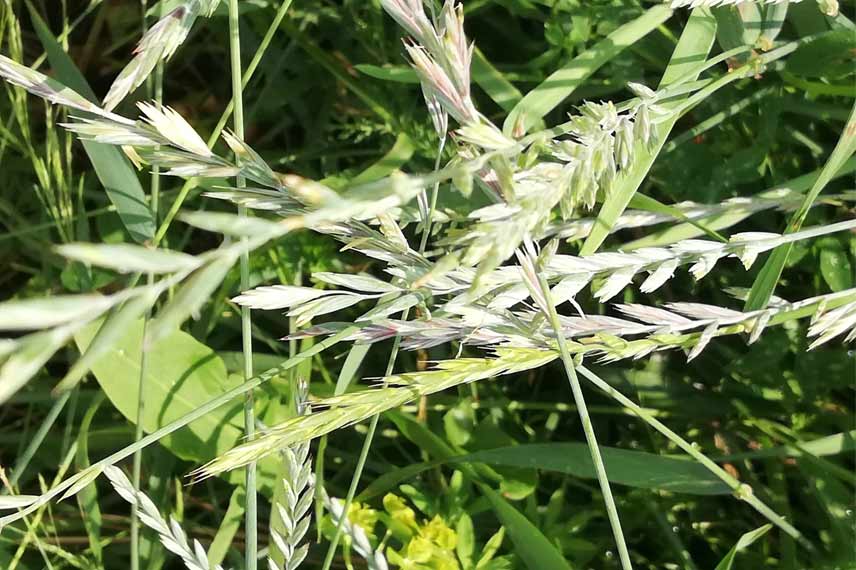
Couch grass – ©Татьяна-Максимова – iNaturalist
Couch grass roots are quite characteristic, composed of fine and very long rootstocks of a whitish colour with numerous branchings.
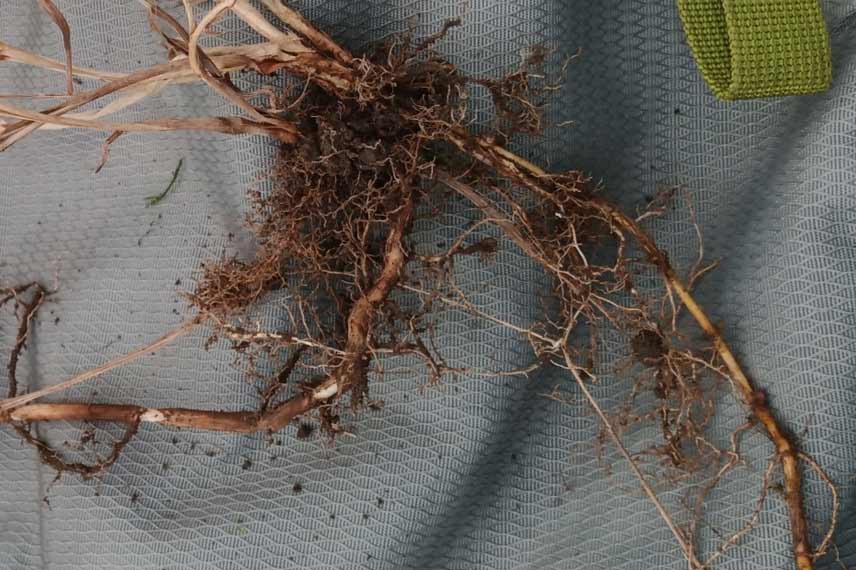
Couch grass rootstocks – ©Darmozrac – iNaturalist
How to get rid of couch grass naturally?
To get rid of couch grass in lawns, vegetable patches or flower beds… You will need a digging fork and a bit of elbow grease! This tool makes it possible to remove the entire tuft of couch grass, including its rootstocks, the main cause of its rapid spread. It is therefore essential to bring the rootstocks to the surface so they dry out and die.
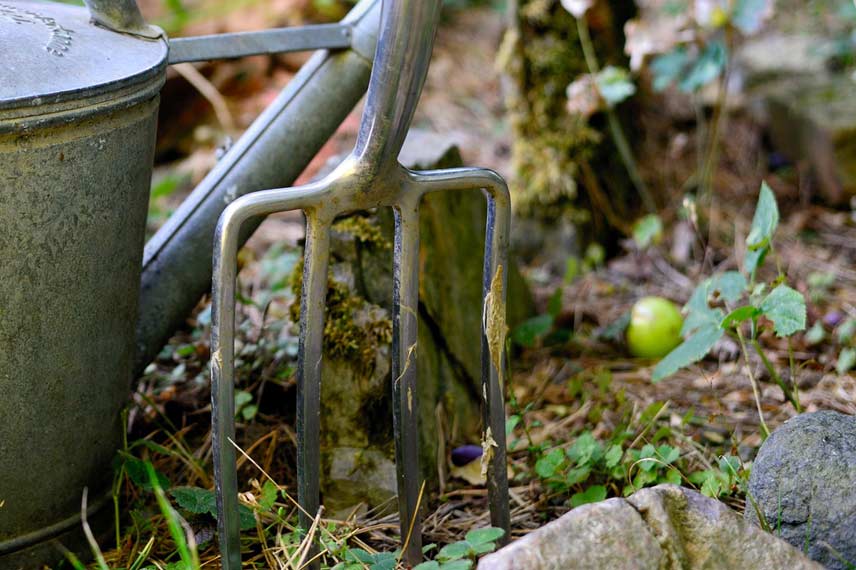
Alternatively, you can work by hand, always taking care to remove as much of the rootstock as possible.
In any case, work preferably in autumn or early spring, and never throw rootstocks into compost, as they may take root there.
Good to know: French marigold, calendula and African marigold are reputed to act as repellents against couch grass rootstocks.
Protecting against couch grass
If your ground is prone to couch grass, make sure to protect your vegetable patch in advance by sowing green manures. These are to be to grow between crops and create competition for couch grass.
What not to do
It is worth noting that some practices have no effect on couch grass and can even accelerate its spread.
- Mulching, normally effective against adventive weeds, will unfortunately be of no help here.
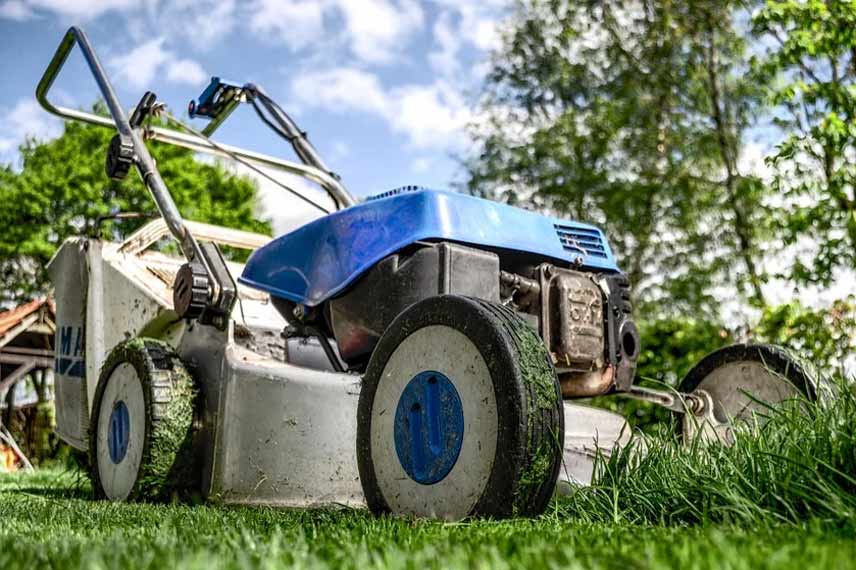
- Never use a rotavator or tiller to remove couch grass! By cutting the rootstock without pulling it out completely, these machines will actually help it to multiply.
- Likewise, thermal weeding actually stimulates development of couch grass rootstocks.
- As for chemical herbicides, besides being polluting and destructive, they have no lasting effect on this grass.
How to control couch grass?
Try instead to contain couch grass rather than eliminate it completely, so you can benefit from its virtues.
Indeed, this herbaceous plant owes its name to our pets, particularly dogs and cats which readily eat it because of its purifying properties. These properties are also recognised and used in traditional medicine. Couch grass’s diuretic effects are harnessed in the form of decoctions of rootstocks*.
*Warning: prior medical advice is still necessary.

Also note that couch grass helps limit erosion along coastlines, and on particularly steep slopes. Likewise, where short grass meadow fails to establish, couch grass can prove a good alternative.
In any case, couch grass must be contained to prevent it from taking over the garden. Geotextile felt is insufficient, since it does not withstand couch grass’s sharp roots. By contrast, installing a rootstock barrier (as with bamboo) is a very good solution. Then bury the rootstock barrier at least 30 cm deep, and leave it protruding 10 cm above ground.
- Subscribe!
- Contents
































Comments